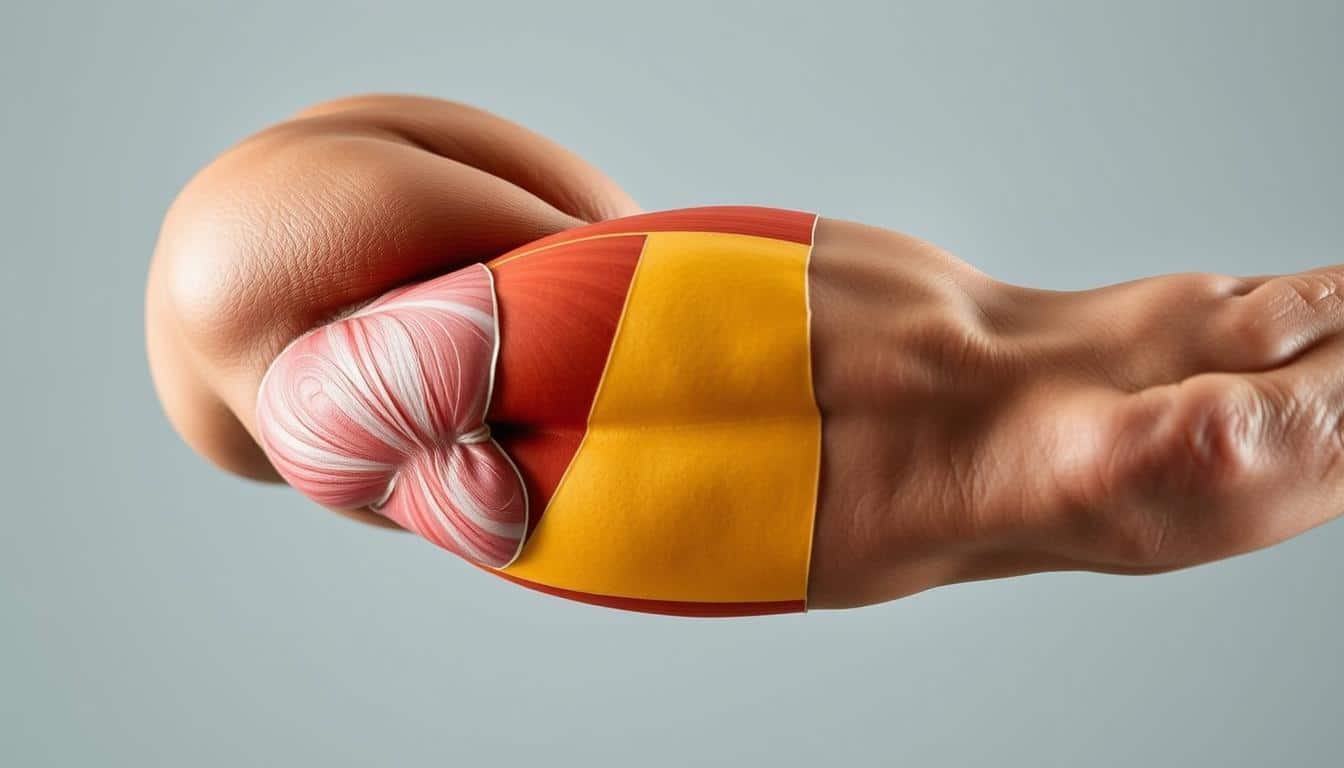Ever wonder why some athletes seem to have endless energy during workouts while others hit a wall? The secret lies in how they fuel their bodies. Carb periodization is a smart way to match your energy intake with your workout demands. It’s like budgeting your energy—save carbs for when you need them most.
Many athletes confuse training fuel with race-day strategies. Training low, for example, can boost fat metabolism but requires careful planning. The goal? Enhance your performance while keeping your body ready for race day.
By understanding these strategies, you can make the most of your workouts and improve your overall fitness. Ready to learn more? Let’s dive into how you can optimize your fuel for better results.
What Is Carbohydrate Periodization?
What if you could plan your meals to match your exercise needs? That’s the idea behind carbohydrate periodization. It’s a strategy where you adjust your carb intake based on how hard you’re working out. Think of it as budgeting your energy—save carbs for when you need them most.
Just like you plan hard and easy workouts, you can plan your fuel. On high-intensity days, you’ll eat more carbs. On lighter days, you’ll cut back. This approach helps your body adapt and perform better.

Your body stores carbs as glycogen in your muscles and liver. Muscles can hold about 1,400 calories of glycogen, while the liver stores around 320 calories. These reserves are your go-to energy source during exercise.
Carbs and glycogen aren’t the same. Carbs are the fuel you eat, while glycogen is the stored version your body uses. The fuel for work required principle suggests eating just enough carbs to match your workout demands. This keeps your energy levels steady without overloading your system.
Why Use Carbohydrate Periodization?
Have you ever felt like your energy levels don’t match your workout intensity? This is where carbohydrate periodization comes in. It’s a strategy that helps you align your fuel intake with your exercise demands, ensuring you perform at your best.
Here’s why it works:
- Boosts fat burning efficiency: Training with lower glycogen levels can teach your body to burn fat more effectively. This is especially useful for endurance athletes who need to conserve energy over long periods.
- Triggers muscle adaptations: When your body adapts to low glycogen, it becomes more efficient at using energy. This can lead to better performance during high-intensity workouts.
Take McArdle’s disease as an example. People with this condition can’t properly use glycogen, leading to poor performance during exercise. This highlights how crucial proper carb timing is for energy management.
However, like interval training, this approach has its risks. Training low can improve fat oxidation but may suppress your immune system or lead to muscle breakdown if not done carefully. That’s why recovery is key.
A study showed that legs trained with low glycogen had better endurance than those with high glycogen. This proves that timing your fuel intake can make a real difference.
Remember, this isn’t about eating fewer carbs—it’s about timing them right. For more tips on optimizing your diet, check out our guide on the keto diet for athletes.
How Carbohydrate Periodization Works
How can you ensure your body has the right fuel for every workout? The answer lies in understanding two key strategies: training low and competing high. These methods help you align your energy intake with your exercise demands, ensuring peak performance.
Training Low vs. Competing High
Training low involves working out with reduced glycogen levels. This approach is ideal for moderate sessions under 90 minutes, like fasted morning workouts. It teaches your body to burn fat more efficiently, which is great for endurance athletes.
On the other hand, competing high means carb-loading before longer races or intense sessions. Research recommends 8-10g of carbs per kilogram of body weight for events over 90 minutes. This ensures your muscle glycogen stores are full, giving you the energy to push through.
| Strategy | Best For | Carb Intake |
|---|---|---|
| Training Low | Moderate workouts ( | Reduced |
| Competing High | Long races (>90min) | 8-10g/kg |
Fueling for the Work Required
The fuel work required principle is simple: eat enough carbs to nail hard workouts, but cut back on easy days. This keeps your energy levels steady without overloading your system. For example, save white bread and gels for race week, and stick to oats or sweet potatoes for daily meals.
This approach also leverages the crossover effect, where your body uses more fat at lower intensities and more carbs during high-intensity exercise. By timing your fuel intake, you can optimize energy usage and improve performance.
Common Methods of Carbohydrate Periodization
Want to know how top athletes manage their energy for peak performance? It’s all about timing your fuel. By adjusting your meals to match your workout demands, you can boost your results and feel stronger during every session.
Fasted Training
Fasted training involves working out on an empty stomach, usually in the morning. This method is best for moderate sessions under 90 minutes. Always eat protein before starting to protect your muscles. It’s a great way to teach your body to burn fat more efficiently.
Sleep Low, Train Low
This approach means skipping carbs after dinner and doing a morning workout. Your body will use liver glycogen for energy, which can improve endurance over time. It’s perfect for athletes looking to enhance their fat-burning capabilities.
Twice-Per-Day Training
With this method, you do two workouts in one day. The first session depletes your glycogen, so the second session trains your body to perform with lower energy stores. It’s ideal for building endurance and adapting to tough conditions.
Pro Tip: Add caffeine to your low sessions to maintain intensity. But remember, never do back-to-back low sessions—it’s like skipping rest days and can lead to burnout.
Benefits of Carbohydrate Periodization
Curious how elite athletes maintain their stamina and avoid energy crashes? The secret lies in smart fuel management. By aligning your diet with your workout demands, you can unlock several benefits that boost performance and recovery.
One major advantage is improved fat burning efficiency. Think of your body as a hybrid engine—it learns to use both fat and carbs for energy. This is especially useful for endurance activities where conserving fuel is key.
Another perk is preventing overeating on easy days. Just like you wouldn’t wear heavy workout clothes for a light jog, you don’t need extra carbs for low-intensity sessions. This approach keeps your metabolism balanced and avoids unnecessary calorie intake.
Proper recovery is also enhanced. After a hard session, replenishing glycogen stores with the right carbs speeds up recovery. This ensures you’re ready for your next workout without feeling drained.
A study on cyclists showed impressive results. Those who consumed a 50/50 glucose-fructose mix improved their time trial performance. This highlights how strategic fueling can make a real difference.
Here’s a quick summary of the benefits:
| Benefit | How It Helps |
|---|---|
| Fat Burning | Trains your body to use fat efficiently |
| Balanced Intake | Prevents overeating on easy days |
| Faster Recovery | Replenishes glycogen stores quickly |
| Performance Boost | Improves endurance and stamina |
Real-world bonus? This strategy helps avoid stomach issues by not overloading your system with unnecessary carbs. It’s a win-win for your performance and comfort!
Risks of Carbohydrate Periodization
While carb periodization can boost performance, it’s not without its challenges. Like any strategy, it comes with potential risks that you need to be aware of. Let’s break them down and explore how to avoid them.
Reduced Workout Intensity: You can’t sprint on empty. Training with low glycogen levels might leave you feeling sluggish during high-intensity sessions. This can limit your ability to push hard when it matters most.
Increased Injury Risk: Studies show that chronic low carb intake can lead to bone stress and injuries. Your body needs energy to recover and stay strong, so cutting back too much can backfire.
Immune Suppression: Carbs play a key role in protecting your immune system. After a marathon or intense workout, low carb levels can make you more prone to colds and infections.
Solution: Always follow low days with high-carb recovery meals. This helps replenish glycogen stores and keeps your body fueled for the next session.
Warning: Never try this if you’re new to training or already underfueling. It’s a strategy best suited for experienced athletes who understand their body’s needs.
By balancing your intake and listening to your body, you can minimize these risks and make the most of this powerful strategy.
How to Implement Carbohydrate Periodization
Ready to take your workouts to the next level? It’s all about smart fueling. By aligning your meals with your exercise demands, you can boost your energy and improve your results. Here’s how to get started.
Step 1: Assess Your Training Needs
First, categorize your sessions. Label them as ‘go hard’ or ‘go easy’ based on intensity. High-intensity days require more fuel, while lighter days need less. This simple step ensures your energy matches your effort.
Step 2: Adjust Carbohydrate Intake
Next, tweak your meals to fit your plan. Aim for 5-8g of carbs per kilogram of body weight daily. Before races or intense sessions, increase this to 10g/kg. This approach keeps your energy steady without overloading your system.
- Post-workout recovery? Aim for 1.2g/kg of carbs to replenish glycogen.
- Race week tip: Taper your training two weeks before and start carb-loading two days prior.
Step 3: Monitor Performance and Recovery
Finally, track how you feel. Use a simple 1-10 scale to rate your energy levels. Feeling flat? Add more carbs to your next meal. This helps you fine-tune your plan for better results.
Hydration tip: Pair your carbs with electrolytes to avoid a sloshy stomach. This keeps you fueled and comfortable during every session.
Conclusion
Fueling your body the right way can make all the difference in your performance. The key is to fuel smart, not less. This approach isn’t for beginners—master the basics first before diving in.
Start small. Try one low session weekly and note how your energy and recovery feel. This helps you understand what works best for your body.
Remember, your best race starts with your next meal. Proper nutrition is the foundation of success for all athletes.
For a quick guide, download our carb timing cheat sheet. It’s packed with tips to help you optimize your training and fuel like a pro.


